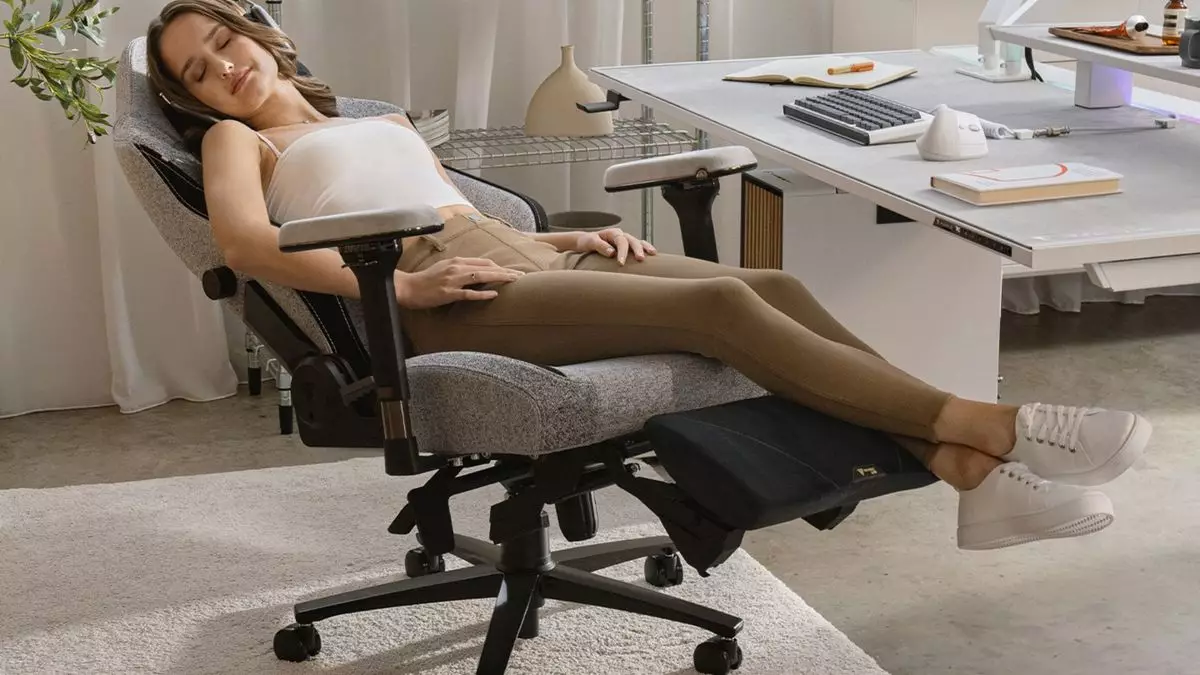Gaming chairs have become synonymous with comfort and supportive ergonomics, an essential for anyone looking for prolonged sessions of gaming or office work. Secretlab, a frontrunner in the gaming chair industry, has recently introduced an intriguing product cleverly designed for its popular Titan Evo and Classics models—a cushion accessory that purportedly allows users to recline further and even take a nap. But does this new tool genuinely enhance user comfort, or is it simply a gimmick to fuel consumerism?
The idea of enhancing a gaming chair to encourage napping constitutes an interesting proposition, albeit one that raises eyebrows. Secretlab’s promotional messaging claims that the cushion allows for a seamless transition between work, play, and even a quick nap. While creative, the mere notion of dozing off in a gaming chair contradicts the primary purpose of such furniture: to maintain posture and support during extended usage. Yes, the thought of reclining back and catching some rest can sound appealing, but does it justify the creation of a new, supplementary gadget?
The cushion in question is fabricated from memory foam and is designed to clip onto the chair with a metallic hitch. Its dimensions are 230 mm by 430 mm, providing an additional layer which, according to Secretlab, features “microscopic memory pockets” that align with the contours of a user’s legs for enhanced pressure relief. The entire setup boasts a convenient assembly time of just three minutes and allows adjustments from 0° to 80°.
At its core, the add-on appears to target users who may have specific mobility challenges, thereby facilitating greater comfort and support. This angle is commendable; after all, promoting inclusivity in product design is important. Still, it feels like a missed opportunity for Secretlab to bilaterally market this tool as primarily beneficial for all gaming chair users rather than focusing on a niche.
But aside from precariously leaning back to snooze amid a gaming marathon, does this device host any real value? The reality is sobering: most users who invest in high-quality gaming chairs do so to avoid the discomfort associated with poor posture, not to create a makeshift bed. The contrasting image of a gamer dozing off in a gaming chair, with hands awkwardly resting on the controller, may evoke laughter but undeniably sheds light on the impracticality of such an add-on.
Given that the Standard Edition of this cushion is retailing for a hefty $199, with the Founder’s Edition reaching an eye-watering $250, one must question the true value of this enhancement. Would consumers be better off investing in an upgrade for their gaming system, like a state-of-the-art 2 TB SSD, or perhaps selecting a new game title to invigorate their gaming library? The financial commitment required for this add-on seems disproportionately high for what it provides.
As enthusiasts or casual gamers delve into potential purchases, the importance of basing decisions on tangible benefits remains paramount. It becomes evident that the allure of “nap-friendly” gaming chairs may be more about marketing tactics than legitimate user needs.
In principle, the intention behind Secretlab’s new cushion add-on might resonate with a handful of users who are curious about maximizing their gaming experience, but it raises essential questions around necessity and consumerism. Ultimately, the comfort provided by ergonomically designed gaming chairs should be central to the conversation, not the creation of additional accessories that complicate their primary function.
As we consider the market offerings of gaming furniture, the argument is compelling: while innovation should never be overlooked, it must also be critically examined. Will this cushion make a practical difference, or is it just another overpriced accessory? For many, a careful consideration of spend versus functionality will dictate their decision, possibly steering away from a purchase that feels more like a fleeting trend than a genuine need. Through our evaluation of Secretlab’s cushion, we recognize that sometimes more is simply more, and not in the way that we might hope.

